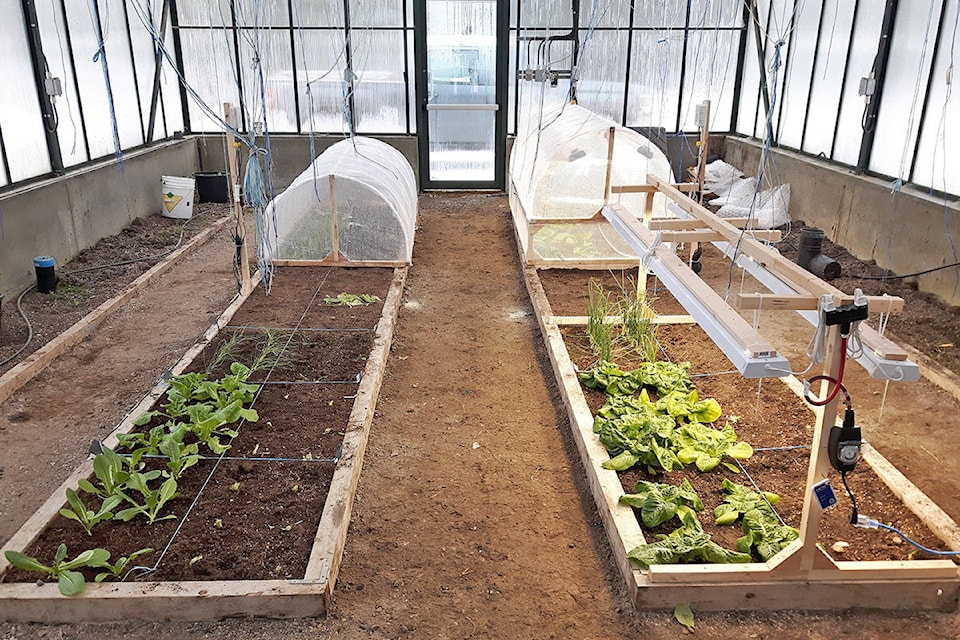College of New Caledonia (CNC) researchers in Quesnel have released new findings on how the growing seasons of romaine lettuce, butter crunch lettuce and scallions in northern climates could be extended.
Two crops were sowed last year—one in late August and another in mid-September in mini-domes within a greenhouse at the campus with a combination of supplemental light.
The crops which tend to have a lucrative sow earlier in the year can be challenging to grow late season in greenhouses due to lower light intensities at that time of the year, CNC biology instructor Jennifer Catherall said.
“With climate change, we’ll potentially face hotter summers and milder winters,” she said in a news release.
“This study offers opportunities to continue growing cool-season crops later in the year. This adds food security for the region as small growers produce further into the off-season.”
The crops were observed under four growing conditions—LED lights in a dome, LED lights with no dome, a dome with no LED lights, and lastly, no dome and no LED lights.
CNC researcher Araham Gazana said the addition of LED lights inside the mini-dome provided the plants with supplemental light and extra heat, which are essential to keep plants alive and growing during harsh winter conditions.
Read More: The science of tomatoes
Before the crops were harvested in mid-November and mid-December, a vast amount of data was collected such as air and soil temperatures and overall energy consumption.
Researchers also measured the total weight, average height and diameters of onion bulbs and lettuce heads per treatment.
In the end, the study found the use of low-cost supplemental LED lighting at the correct light intensity resulted in an increase in production.
“Plants grown with lights grew bigger and faster,” Catherall said.
“This method could allow for producers to harvest lettuce and scallions just prior to winter farmer’s markets and diversify the produce that’s usually available at this time of year. Future studies could test hardy Asian greens and Mesclun salad greens grown in a similar environment.”
Read More: ‘I just want to survive:’ Greenhouses struggling with economic reality of COVID-19
An insulating dome without supplemental light did not appear to provide substantial benefit to plant growth which Catherall said could be the result of CNC’s polymer greenhouse, adding growers with a traditional greenhouse might see better results from a dome.
Rob Borsato, co-owner of Mackin Creek Farm located on West Fraser Road north of Williams Lake said he was thrilled with the research demonstrating possibilities with the production of fall-planted, fall-harvested marketable lettuce and onions.
“It’s especially exciting to realize that with relatively low inputs, marketable crops can be grown in a greenhouse that, for many of us, likely would otherwise be unused at this time of the year.”
Do you have a comment about this story? email:
rebecca.dyok@wltribune.com
Like us on Facebook and follow us on Twitter.
